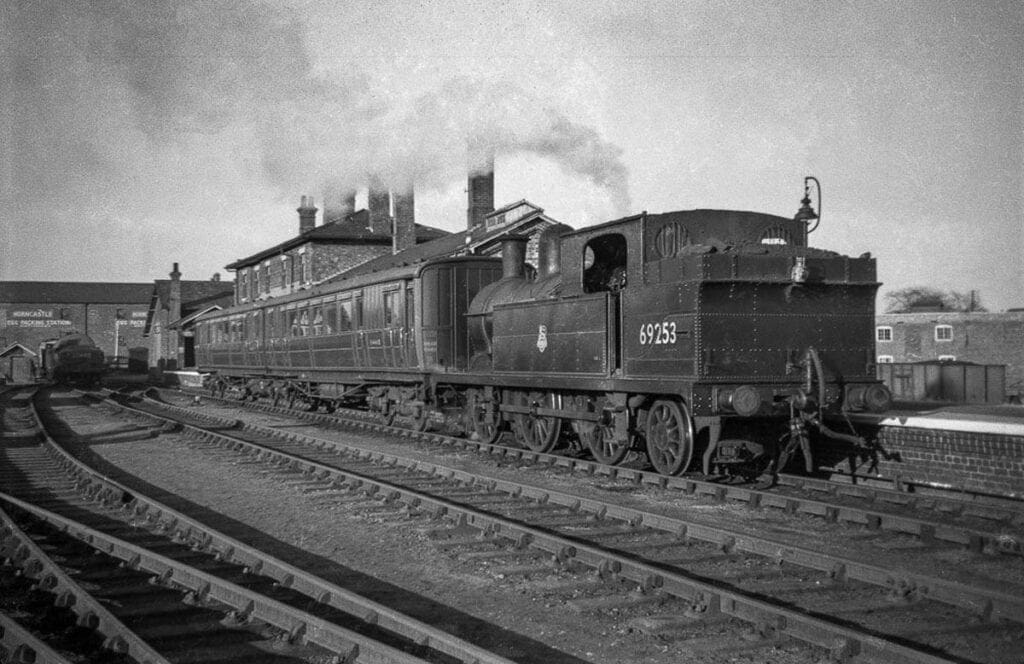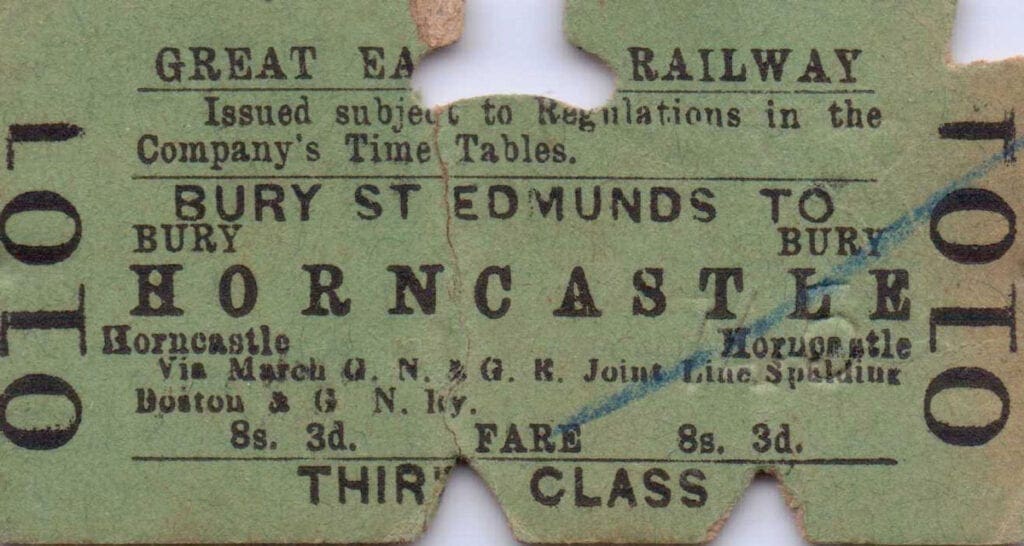
A virtual exhibition will mark 50 years since the last train rolled out of Horncastle in Lincolnshire.
The final train to leave the town was a freight bound for Lincoln via Woodhall Spa, Woodhall Junction, Stixwould, Southrey and Bardney, where trains had continued to serve the sugar beet factory.
Related articles
- Passenger train converted into COVID-19 testing station for staff
- Locomotion No.1: Dispute over historic engine’s new home resolved
- Severn Valley Railway clarifies photo charters position

For Horncastle and Woodhall Spa, it was the end of the line for a service that had begun in 1855.
Despite opposition, daily passenger services ceased on September 13, 1954.
A special service, organised by railway enthusiasts, ran 10 years later, bringing the largest steam locomotive ever seen in Horncastle to the branch. From then, only goods trains ran, with the crew opening and closing level crossing gates and changing the points on the seven-and-a-half mile run from Woodhall Junction.
In its heyday, the line was very profitable and the original Horncastle and Kirkstead Junction Railway paid good dividends to shareholders under an agreement with the operator, the Great Northern Railway, until absorption into the London & North Eastern Railway in 1923, which was later nationalised in 1948.

How to get involved?
An online exhibition is to be staged by the Horncastle History and Heritage Society on their website to mark the milestone.
From March 31, the exhibition will tell the story of the line’s construction, operation, the fight to keep it open and what happened after closure.
The event promises to ask what would Horncastle have looked like and how would it have developed if the railway had survived? Would there be less congestion and pollution on the roads – would travel to London, to Boston, Lincoln and Skegness, have been faster and easier? Or could it have become a heritage railway, attracting tourists to boost the local economy?
It is hoped there will be a physical exhibition at the relaunched Sir Joseph Banks Centre in Horncastle in the summer, once COVID-19 restrictions are eased. This will be a chance to display photos, objects and mementos of the railway, and perhaps even a model of the town’s lost station.

The Society has also worked with Lincolnshire County Council to design a new leaflet for the Spa Trail, which follows the route of the old railway. It is hoped that this will help encourage more visitors to walk and cycle to Horncastle and Woodhall Spa, once tourists are allowed to return.
Chairman of the Horncastle History and Heritage Society, Dr Ian Marshman, said: “What has emerged already is the huge interest in Horncastle’s railway – in the town and further afield.
“People have shown us relics like old railway signs salvaged from the station yard, rare posters and tickets. We have also tracked down a long-lost hand drawn plan in beautiful colour for Horncastle Station, which was preserved by being hidden behind a wardrobe for over a century.
“Some never-before-seen photographs of the station, and the people who lived and worked around it, have also come to light. An expert on rare train tickets has offered to display his collection of colourful Horncastle and Woodhall Spa train tickets, which date from the late 1800s and early 1900s.”
Dr Marshman added: “Another question we’ve puzzled over, is why was there a pub in Horncastle called the Railway Hotel on North Street, far away from the station. We’ve been told that older people in the area believed that ‘a train’ was buried at the bottom of the old brick pits nearby, in what is now called Bell’s Yard.
“We think it could have been skip wagons used to move clay for the bricks, as much equipment was washed into the pit during a major flood in the 1920s. Although for now, the truth remains a mystery.”
The award-winning Woodhall Spa Cottage Museum, located next to the old track is also planning to mark the anniversary.
Four information boards on the history of the line and the significant role it played in developing Woodhall Spa have been produced for a special display with the assistance of the current owners of the former Woodhall Junction station, which is now a private residence.
An original director’s report from 1863 has been located and the museum has a number of relics and photographs of the line which it’s hoped visitors will be able to see, when the easing of COVID-19 restrictions enables it to reopen.


